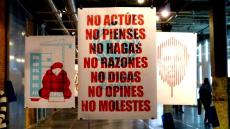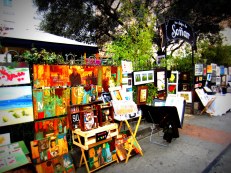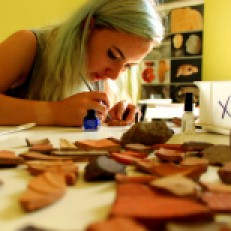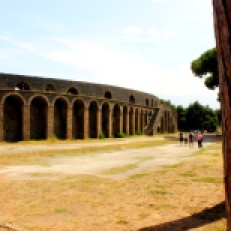Food
Madrid Diaries: Unemployed but Happy
“I’ve learned that making a ‘living’ is not the same thing as making a ‘life.’” ~ Maya Angelou
Whenever I meet somebody new and they find out, during the course of the conversation, that I’ve been jobless for over one year, living in a foreign country where I have no family or prior acquaintances, and where I just barely speak the language, they look at me incredulously, stupefied: “But what do you do all day? How do you survive? Aren’t you bored to death?”
Let me just mention here that my lack of gainful employment has little to do with laziness, unwillingness, or the “handsome fortune” I may possess, and mostly to do with my legal status in Spain (residencia sin trabajo – residency without work), coupled with the language barrier (dam, rather) that I’m still slowly chipping away at.
But I find it odd, the amount of importance people attach to what you “do” for a living. I myself used to be one of those people: ever since college, I had never been without a job of some sort, full-time, part-time, internship, fellowship, what have you. Even though I wasn’t particularly ambitious or “career-driven”, I took pride in the work I did, because I saw it as a “productive” use of my time, as a contribution towards my own financial wellbeing, and as a logical step forward in my profession, another glittering addition to my resume. And, even if none of that held true, at least I would have a response to that piquing, unrelenting question, the backbone of social banter – “So, what do you do?” I could define myself in one neat, clean, impressive title, and immediately win the other person’s respect. That felt good.
So what happened when I followed my Erasmus Mundus PhD candidate-better half to Spain? What happened when the prospect of landing a job of any kind – let alone related to my career – was suddenly as bright as a Lahori home on a sticky summer’s night? (non-Lahoris/Pakistanis, look up “load shedding” on Wikipedia!)
Well, like any respectably assiduous person, I was frustrated; frustrated with my lack of “productiveness”, uncomfortable with my own free time, guilty of spending money when I wasn’t earning any, guilty of letting my Berkeley Master’s degree “go to waste”; apologetic of my “situation” in general, sighing deeply and resignedly whenever the topic came up…
But the truth is – I wasn’t unhappy. Six months down the line, I was pretty darn happy, and far, far from bored. Society tends to evaluate people based on degrees, paychecks, publications, trophies, on solid, tangible proofs of “success” and one-word descriptions of what they “do for a living”. “I’m a doctor – actor – teacher – writer – cleaner – waiter …” As if nothing exists beyond the ambit of those rectangular brackets.
But we are so, so much more than what we do. The tragic part is that most people never have the time, the opportunity or the motivation to explore themselves beyond the one-word labels, to spill out over the edges of their rectangular holes. I figured: I’m here in this fantastic European city, lucky enough to have time, opportunity and buckets of motivation – could I really complain about my “situation”?
Now, when someone asks me the invariable, the pedestrian, “So, what do you do?”, I cheerfully reply, “Well, I’m currently employed with living”, and present to them the following list:
1. Dance
Apart from taking regular classes at the Karnak School of Oriental Dance in Madrid, I started teaching Bollywood Dance earlier this year with Tara, my partner-in-crime from across the Wagah border. Our group, Mantara, recently performed at a Diwali Dance Fiesta, where our lovely alumnas did splendidly well. Throw in Indo-Pak feasts at the local (Bangladeshi) restaurants and mini-dholkis at my house, complete with mehndi (henna), chai, retro Bollywood music videos and Coke Studio Pakistan, and home doesn’t feel so far away!
2. Song
I also recently joined Voces de Ida y Vuelta, a multicultural, multlingual choir that performs at local fundraisers and charity events. Grouped with the sopranos, I’m currently working on reaching glass-shattering pitches and memorizing Cuban, Chilean, Brazilian and Gabonese songs, with many more canciones to come – including one from Pakistan!
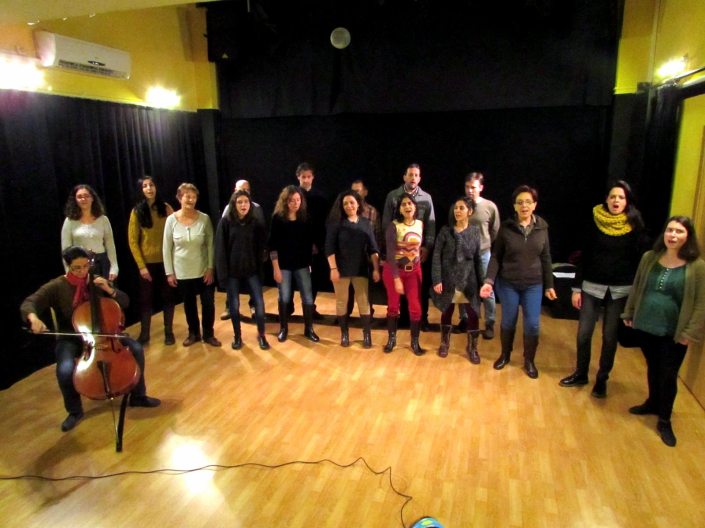
3. Art
I don’t “make” art (unless you count photography), but Madrid is such a fantastic place to see and appreciate all kinds of art – for free! – that you can’t help soaking it up every day, as you casually stroll through an exhibition at the neighbourhood gallery or at a random cafe, at the former Post Office, the one-time slaughterhouse or tobacco factory, at Retiro Park, or in the graffitied alleys of Malasaña. Over the course of my artistic education in Madrid, I’ve decided that I don’t particularly like (or understand) Picasso, but Dali I find fascinating (though I don’t fully understand him either). I’ve also decided that if a painting looks too much like a photograph, then it isn’t a good painting. There, my two cents of artistic wisdom!
4. Archaeology
Following up on an old dream (not inspired by Indiana Jones!), I volunteered for an archaeological excavation (read: labour camp) this summer, in the small town of Pollena Trocchia in the south of Italy. Together with 20 bright-faced archaeology undergrads from the U.S., U.K., Canada and Europe (I had to represent the brown people of the world), I dug, scraped, shoveled, pick-axed, sifted, wheelbarrowed and rolled around in incalculable amounts of volcanic soil at the site of an ancient Roman Bathhouse and Villa, destroyed in 472 C.E. by the eruption of Mount Vesuvius. Needless to say, working as a mazdoor under the hot Neapolitan sun and living like a mazdoor (10 perpetually filthy people sharing a perpetually filthy dorm and bathroom) gave me a whole new appreciation of the academic world, of airconditioned libraries and sparkly-floored museums, not to mention of my own sparkling bedroom and bathroom. But, inspite of it being one of the most physically challenging things I have done in my life, I’m not “cured” of my archaeology illusions quite yet!
5. Food
I’ve always been fond of tinkering around in the kitchen, and every new place inspires you to add new dishes to your repertoire. So, apart from the classic spaghetti bolognese (Pakistani style), the best Thai Green Curry you’ll ever have this side of the Pacific, and my special death-by-chocolate brownies, here are some other hearty goodies you’ll get to sample at Casa Manal. (Note: These photos are not my own, but I swear, the food looks just like this!)
6. Park
If there’s one place we’ve spent more time in Madrid than any other, it’s Retiro Park. Madrid’s main park used to be a retiro, a retreat for Spanish royals until the late 19th century, when it was opened to the public. It’s big, it’s beautiful, and you can do absolutely anything you want there, from running, biking, rollerblading, boating and gyming to yoga, tai chee, frisbee, slacklining, dancing (thanks to us!), to watching magic shows, puppets and live music, seeing art exhibitions, enjoying a coffee, lemonade or sangria (whichever you prefer), to dozing quietly in a shady corner – a little piece of paradise in the heart of Madrid.
7. Language
Apart from continuing Spanish classes at C.E.E. Idiomas and regular intercambio coffee dates with my Spanish girl friends, I’ve added a new item to the daily study regimen – Spanish TV soaps. I’ve never been much of a TV buff, but there’s a certain pleasure in ensconcing yourself on a sofa with a blanket and a box of cookies and watching a dramatic story of some other place and time unfold magically infront of your eyes on an HD TV screen. And here in Madrid, I have an excuse to watch all the TV I want! From the weighty life of Spanish “Reconquista” Queen Isabel to swashbuckling adventures in the Spanish American colonies to a feudal family drama set in a Franco-era Castillian village, I’ll be speaking the Queen’s (500 year-old diction of) Spanish in no time!
8. Volunteering
I joined the WWF (World Wildlife Fund) Madrid Volunteer Network shortly after arriving in the city, but was initally too scared to go to their weekly and monthly activities (tree plantings, bird censuses, plodding around marshes and other strange things that only me and my partner-in-crime from across the border would find enjoyable). We did make it to the Earth Hour event though, inspite of the pouring rain, proving our mettle as die-hard WWF supporters and being rewarded with Panda T-shirts. I plan to join the regular field activites as soon as the weather warms up, this time with reinforced Spanish!
9. Travel & Photography
Perhaps the best part about living in Europe is the travelling – within a few hours flight from Madrid I can be in any number of different European capitals, each with a different language, different architecture, food and feel. And if you plan in advance and are a savvy deal-hunter like I’ve become, the trip won’t cost you a euro more than it would have in your shoestring student-budget days.
But there’s so much to see in Spain itself that we haven’t yet been tempted by elaborate holidays abroad. I watch with satisfaction as the souvenir magnet collection on our fridge steadily grows, as do the number of photo archives on my computer. For me, travelling is pure thrill – every time I go to a bus terminal, a train station or an airport, I feel slightly giddy, as if I were 8 years old and about to step into Disneyland. Each time I’m wandering the streets of a new city, curiosity and a camera in hand, I feel that strange sense of belonging everywhere, yet of belonging nowhere.
And each time I travel, I’m reminded about how beautiful the world is, how diverse the world is, and how similar we all are – all of us humans, busily making lives and earning livings in whatever little patch of earth we call home. In the end, no matter what we do or don’t do, happiness doesn’t come to us. It flows from within.
Costa Rica Day 3: Ziplining in a Cloudforest, and a Hostel Hunt!
September 5th, 2010
Santa Elena / La Fortuna, Costa Rica
We woke up to the sound of sizzling eggs and childish chatter in Spanish. I rubbed my eyes and looked at the forest-green walls, the lacy white curtain spilling light, the gigantic tiger-print fleece blanket on the bed. “Where am I?”
At a hostel in Santa Elena, of course, hours away from one of the most thrilling activities Costa Rica had to offer, in one of the most pristine cloudforests in the world!

We hurried down to the kitchen, where the hostel-keeper Ronny’s wife was cooking us up a hearty breakfast, while her two adorable children Daniel and Jasmine capered about in their sky-blue school uniforms. Soon, a Turismo van arrived to take us to the Selvatura Adventure Park for our canopy tour.


Selvatura Park is located on 1, 200 acres of virgin cloudforest in the heart of the misty Monteverde Reserve, founded in 1951 by a group of American Quakers. There are no walking or hiking trails traversing the forest, so the only way to see it is through a network of hanging bridges, or on horizontal cable-trolleys called ziplines. Ziplines have been used as a method of transport in remote mountainous regions (including northern Pakistan and India) for over a century , but the modern canopy tour was developed by naturalists in the 1970s as an eco-friendly way of exploring rainforest.
As our guides geared us up with harnesses, gloves and helmets and hammered out instructions, I had that familiar fluttery feeling in my stomach – What if I get stuck mid-way on the cable? What if I lose my balance and topple upside-down? What if I scrape my hand on the steel and it starts to bleed?
“Really, you’re the last person who has the right to be scared, you’ve jumped out of an airplane!” my husband Z scolded me. I think I was only pretending to be scared though – just so I’d be mentally prepared in case something did go wrong.
But once we were up there in the treetops, on the first platform, and with one push I was sent zooming along the cable, comfortably seated in my harness, lush forest below and sunny skies above, there wasn’t a happier person than me in Monteverde.


I just couldn’t control the smile on my face. It was so, so, so much fun. The moment I reached the other side I couldn’t wait to do it again. We rode 15 different cables in the span of 2 hours, over various lengths and heights – sometimes brushing past leaves and branches in the thick of forest, sometimes a kilometer above the canopy, stretching green till the horizon. On the two longest cables (650 and 700 meters), they sent you in pairs, so me and Z rode together, whooping at the top of our lungs the whole way!
Back in Santa Elena town, we were famished (as usual), and made our way to a red-painted soda called Maravilla, recommended to us by the hostel-keeper Ronny. We ordered a typical Costa Rican lunch, casado, which consisted of the basic Latin American fare of rice and beans, with a portion of meat-in-gravy, fried plantains and salad. I polished down my casado con pollo with a tumbler of fresh Tamarindo – imli juice! – and followed it up with dessert at the beautiful Morphos restaurant.




After lunch, we said goodbye to Ronny and family, checked out of Sleepers Sleep Cheaper, and made the journey back to La Fortuna, where we had other activities planned over the next two days. We’d made reservations online at a local hostel, and the jeep was going to drop us there directly.
But as the jeep trundled past La Fortuna’s cheerful downtown and twisted into a pot-holed back alley, and colourful facades turned into tin-roofed shanties, I said to Z with some foreboding, “I have a bad feeling about this place!”
Before we knew it, the jeep was gone, leaving us in the pouring rain at the porch of a dingy grey house with a sputtering tube-light and an emaciated, bulgy-eyed, 5ft-high man at the reception. “Bienvenido,” he rasped with a crooked grin, “Plees check een hee-yre”. I watched with horror as Z lifted the pen and wrote down his name in an empty register.
The little man then took us around to our “room”, opening a creaky door to a prison cell from Alcatraz – damp and windowless, with paint peeling off the grey walls and a spindly bunk bed covered in grey sheets that looked like they were last washed in 1968.
I stared at Z. “No – way. Nooo way!” He gave me a helpless look. “I know this isn’t very pleasant. But what can we do? We’ve already checked in!”
“It doesn’t matter!” I pressed. “Just make up some story, tell him we have friends at another place, and want to stay with them.” I was conveniently excused from the dirty work because I didn’t speak Spanish and Z did :P
Z came back five minutes later. “I told him. He wasn’t very happy, but I have a feeling this has happened to them before!”
Laughing with relief, we strapped on our packs and set off in the rain towards downtown La Fortuna, to hunt for a decent place to pass the next two nights.
There wasn’t a lack of choice – the main street was strewn with them. We first walked into a beautifully designed, leafy, woody, two-storeyed hostel, comfortable, clean and cheap rolled into one – perfect, really, except for the manic old American hippie who ran it . “But what don’t you like about this place? What? What?” he pleaded when we told him we wanted to look around a little more. “But why would you want to do that? Why? Why?” he almost shrieked.
I looked at Z again – another one of those “looks” – and, finding some excuse or other, we extricated ourselves from the desperate old fogey and ventured on.
A few blocks down, we passed by a place called Hotel La Amistad, where a rotund, smiley-faced man signaled us in through the glass door. “You looking for a place to stay? Won’t find a better deal!” He introduced himself as Salim from Nicaragua, the proprietor of Hotel La Amistad. “You can look around all you want, my friends, but I bet you’ll come right back here!” he winked.
And Mr. Salim – named after an Arab friend of his father’s – was absolutely right. I don’t know if it was his exuberance or the open, inviting look of the hotel, a courtyard surrounded by rooms with hammocks and easy chairs outside every door, but we did’t even bother looking anymore. We were sold!

After a light dinner at the Lava Lounge restaurant across the street, we turned in – and was I glad to be sleeping in the airy room and freshly-laundered white sheets of La Amistad instead of on the bug-infested coffin-shrouds in Alcatraz two streets away ;)
Next week, Day 4: Cano Negro River Safari!
Costa Rica Day 2: Monteverde Horseback Ride & Coffee Tour
September 4th, 2011
Santa Elena / Monteverde, Costa Rica
A Turismo van picked us up from the Arenal Observatory Lodge at 7a.m. and deposited us at the shore of the Arenal Lake for the first leg of our journey to Monteverde – by boat!

After a pleasant 20-minute ride across the warm blue lake, chatting with the nice young couple from Texas who were on the tour with us, we reached a forested edge where our next, much anticipated, four-legged rides awaited.
I adore horses. I always have, taking lessons with 5-year olds at the Lahore Polo Club to forking out 60 bucks an hour at Kensington Stables, just so I could be close to the creatures.
I also have a theory – tried and tested, believe me – that if I don’t find my horse attractive, we just won’t get along, and the ride will be a miserable experience for both of us. So, quickly scanning my four options, I spotted a favourite – a strong, slender chestnut mare – and hurried to bag it, lest one of the Texans got to her first.


I didn’t regret my choice. Mariposa just flew – through woods and dales, over brooks and hills – neck and neck with the lead guide Mariano, effortlessly carrying me behind her. The others in the group, including Z, were left far behind, and for 2 hours it was just me and the spry, sun-wizened Mariano, communicating with gestures and my broken Spanish, a permanent smile on my face. “Cómo se llama esto? Esto? Esto?” I pointed to birds, fruits, flowers that grew in tangled bunches along the way, and Mariano would smile and silently respond by offering me a ripe guava from a tree, or a fragrant white orchid that I happily tucked behind my ear.

I was sad when the ride came to an end (and a little alarmed, when I got off Mariposa and realized my thighs felt like two immovable planks of wood!) After a brief stop at a roadside Minisuper for some fresh pineapple, we were whisked away into a jeep for the last leg of the journey to Monteverde.
There were other tourists in the jeep, including two British girls in their mid-20s, who revealed to us that they were currently in the 10th month of a year-long around-the-world trip. “One day, we decided we hated our jobs and where our lives were going. So we quit, gathered up all our savings, and bought a round-the-world air ticket, from London and back.” There were gasps of disbelief and wows of admiration. “We’ve covered 20 countries so far,” they continued, “from South East Asia to South and Central America, on our way to the States…” I told them they’d better write a book about this when they were done. “Yes, that’s the plan!”

Soon, we reached Santa Elena, the charming, cobble-paved little pueblo closest to the Monteverde Cloud Forest, where most budget travelers stayed. The jeep dropped us off at our hostel, Sleepers Sleep Cheaper, where we checked in with the jolly proprietor Ronny, showered, changed, stuffed our faces with bread and cheese from the nearest Supermercado – we hadn’t eaten a bite since breakfast save the piña! – while another one of those ubiquitous Turismo vans arrived to take us to the coffee tour at Don Juan.
The Don Juan Coffee Plantation was established some 60-odd years ago by a now ancient Don Juan, who greeted our group of 6 with a sweet toothless smile at the reception. Our guide, Elizabeth – a chubby, exuberant Costa Rican woman – proceeded to show us around, demonstrating each step of the traditional coffee-making process, from planting and picking to drying, cleaning and roasting, while throwing in interesting facts about coffee (Did you know that the coffee plant originated in Ethiopia, that there are 40 different varieties, that only 2 are drinkable, that it’s the most traded commodity in the world after oil?)




By the end of the tour, damp from the persistent drizzle, we were desperate for the pure Arabica coffee that awaited us in hot thermoses at the reception. I tasted all three roasts – light, dark and “farmer’s” – before downing 3 cups of the one I liked best (farmer’s, smooth and subtly sharp), accompanied by sweet corn bread and chocolate candy. Z, on the other hand, a religious caffeine-abstinent, decided to go for a shot of the bitter dark roast, sans milk and sugar. “If I’m going to do this once in my life,” he reasoned, “I might as well go all the way!”

That evening, we roamed around Santa Elena – a cluster of souvenir shops and picture-perfect restaurants,populated almost entirely by tourists – and had a fantastic dinner at a place called the Tree House Cafe.


It was barely 9p.m., but sleep was warm and welcome back in our cute, woody little room at the hostel – replete with excellent comida and toasty coffee, blissfully aching from the horseback ride, watching fireflies dance at the misty, lace-curtained window.
Next week, Day 3: Ziplining in the Cloud Forest









